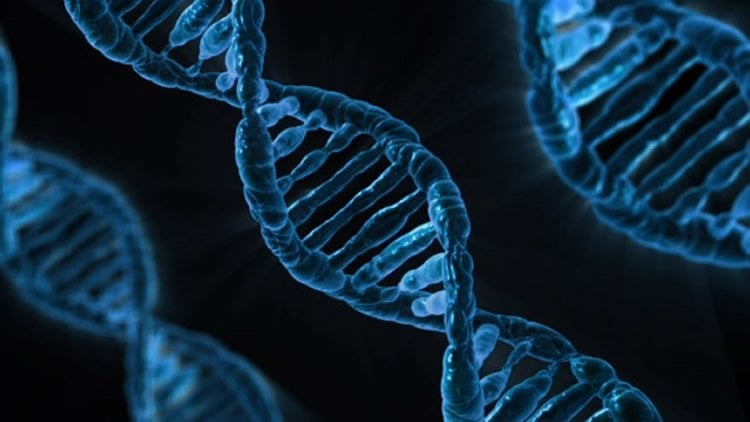Summary: The effect music has on people may be genetically determined by dopamine functionality, a new study reports.
Source: Gladstone Institute.
A new way to regulate protein levels and functions could be the answer to treating devastating neurological conditions.
New details learned about a key cellular protein could lead to treatments for neurodegenerative diseases, such as Parkinson’s, Huntington’s, Alzheimer’s, and amyotrophic lateral sclerosis (ALS).
At their root, these disorders are triggered by misbehaving proteins in the brain. The proteins misfold and accumulate in neurons, inflicting damage and eventually killing the cells. In a new study, researchers in the laboratory of Steven Finkbeiner, MD, PhD, at the Gladstone Institutes used a different protein, Nrf2, to restore levels of the disease-causing proteins to a normal, healthy range, thereby preventing cell death.
The researchers tested Nrf2 in two models of Parkinson’s disease: cells with mutations in the proteins LRRK2 and α-synuclein. By activating Nrf2, the researchers turned on several “house-cleaning” mechanisms in the cell to remove excess LRRK2 and α-synuclein.
“Nrf2 coordinates a whole program of gene expression, but we didn’t know how important it was for regulating protein levels until now,” explained first author Gaia Skibinski, PhD, a staff research scientist at Gladstone. “Overexpressing Nrf2 in cellular models of Parkinson’s disease resulted in a huge effect. In fact, it protects cells against the disease better than anything else we’ve found.”
In the study, published in the Proceedings of the National Academy of Sciences, the scientists used both rat neurons and human neurons created from induced pluripotent stem cells. They then programmed the neurons to express Nrf2 and either mutant LRRK2 or α-synuclein. Using a one-of-a-kind robotic microscope developed by the Finkbeiner laboratory, the researchers tagged and tracked individual neurons over time to monitor their protein levels and overall health. They took thousands of images of the cells over the course of a week, measuring the development and demise of each one.

The scientists discovered that Nrf2 worked in different ways to help remove either mutant LRRK2 or α-synuclein from the cells. For mutant LRRK2, Nrf2 drove the protein to gather into incidental clumps that can remain in the cell without damaging it. For α-synuclein, Nrf2 accelerated the breakdown and clearance of the protein, reducing its levels in the cell.
“I am very enthusiastic about this strategy for treating neurodegenerative diseases,” said Finkbeiner, a senior investigator at Gladstone and senior author on the paper. “We’ve tested Nrf2 in models of Huntington’s disease, Parkinson’s disease, and ALS, and it is the most protective thing we’ve ever found. Based on the magnitude and the breadth of the effect, we really want to understand Nrf2 and its role in protein regulation better.”
The scientists say that Nrf2 itself may be difficult to target with a drug because it is involved in so many cellular processes, so they are now focusing on some of its downstream effects. They hope to identify other players in the protein regulation pathway that interact with Nrf2 to improve cell health and that may be easier to drug.
Other Gladstone scientists on the study include Vicky Hwang, D. Michael Ando, Aaron Daub, Alicia Lee, Abinaya Ravisankar, Sara Modan, and Mariel Finucane. Benjamin Shaby from Penn State University also took part in the research.
Funding: Funding was provided by the National Institutes of Mental Health, National Institute of Neurological Disorders and Stroke, National Human Genome Research Institute, California Institute of Regenerative Medicine, Taube/Koret Center, Michael J. Fox Foundation, ALS Association, National Center for Research Resources, and the Betty Brown family. The work is dedicated to the memory of Nita Hirsch.
Source: Dana Smith – Gladstone Institute
Image Source: NeuroscienceNews.com image is in the public domain.
Original Research: The study will appear in Neuroscience.
[cbtabs][cbtab title=”MLA”]Gladstone Institute “Single Protein May Hold Secret to Treating Parkinson’s.” NeuroscienceNews. NeuroscienceNews, 26 December 2016.
<https://neurosciencenews.com/parkinsons-protein-neurology-5812/>.[/cbtab][cbtab title=”APA”]Gladstone Institute (2016, December 26). Single Protein May Hold Secret to Treating Parkinson’s. NeuroscienceNew. Retrieved December 26, 2016 from https://neurosciencenews.com/parkinsons-protein-neurology-5812/[/cbtab][cbtab title=”Chicago”]Gladstone Institute “Single Protein May Hold Secret to Treating Parkinson’s.” https://neurosciencenews.com/parkinsons-protein-neurology-5812/ (accessed December 26, 2016).[/cbtab][/cbtabs]
Abstract
Interaction between DRD2 variation and sound environment on mood and emotion-related brain activity
Sounds, like music and noise, are capable of reliably affecting individuals’ mood and emotions. However, these effects are highly variable across individuals. A putative source of variability is genetic background. Here we explored the interaction between a functional polymorphism of the dopamine D2 receptor gene (DRD2 rs1076560, G > T, previously associated with the relative expression of D2S/L isoforms) and sound environment on mood and emotion-related brain activity. Thirty-eight healthy subjects were genotyped for DRD2 rs1076560 (G/G = 26; G/T = 12) and underwent functional magnetic resonance imaging (fMRI) during performance of an implicit emotion-processing task while listening to music or noise. Individual variation in mood induction was assessed before and after the task. Results showed mood improvement after music exposure in DRD2GG subjects and mood deterioration after noise exposure in GT subjects. Moreover, the music, as opposed to noise environment, decreased the striatal activity of GT subjects as well as the prefrontal activity of GG subjects while processing emotional faces. These findings suggest that genetic variability of dopamine receptors affects sound environment modulations of mood and emotion processing.
“Interaction between DRD2 variation and sound environment on mood and emotion-related brain activity” by T. Quarto, M.C. Fasano, P. Taurisano, L. Fazio, L.A. Antonucci, B. Gelao, R. Romano, M. Mancini, A. Porcelli, R. Masellis, K.J. Pallesen, A. Bertolino, G. Blasi,and E. Brattico in Neuroscience. Published online December 2016 doi:10.1016/j.neuroscience.2016.11.010






